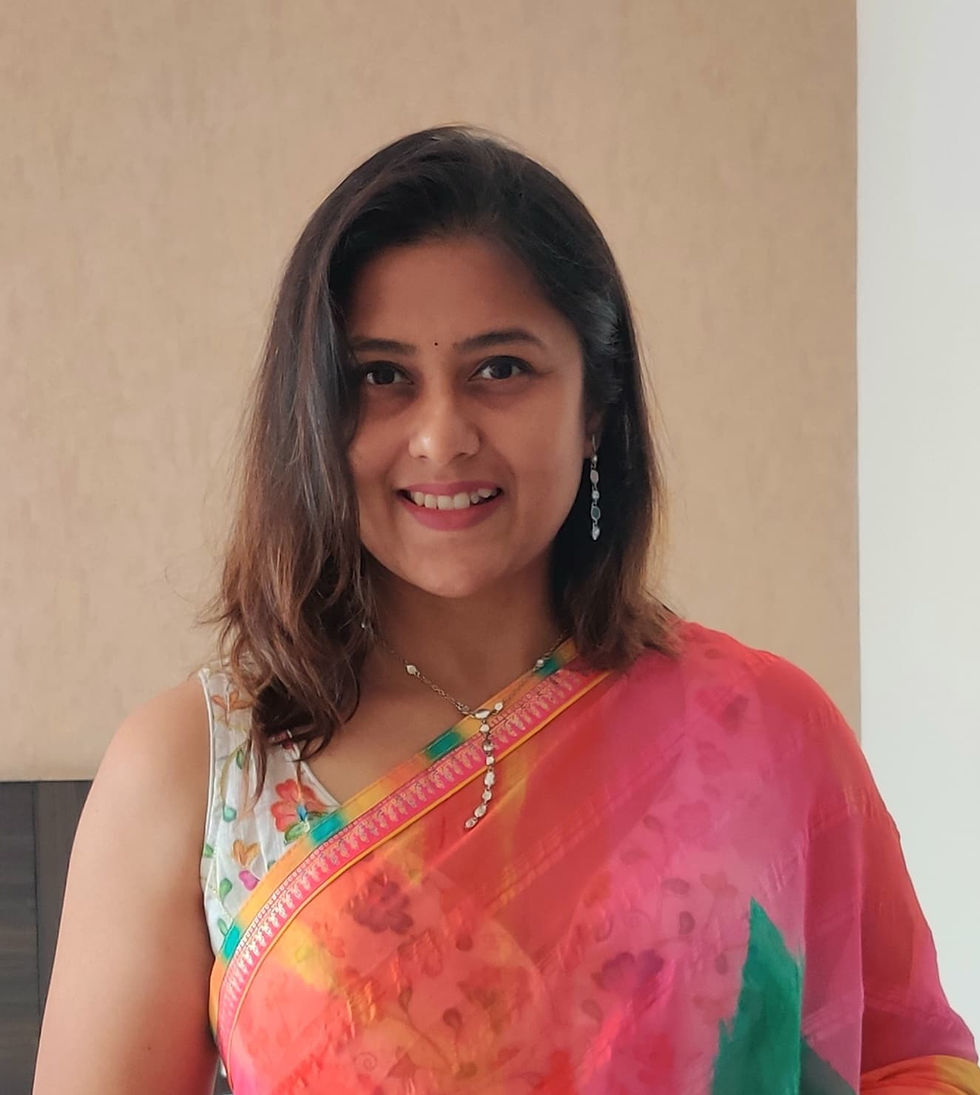A for Apple, A for Art, A for AI
- Jyotsna Nair

- Feb 8
- 3 min read


Jyotsna Bhole
Artist and Owner of Jyotsna Nair Art Studio
Introduction to Evolution and Change
Evolution didn't stop billions of years ago; it was merely the beginning. As time progresses, everything changes—sometimes for the better, sometimes for the worse—but there is a definitive shift from what was to what is now.
And I don’t think there is anything wrong with it. We are humans, the only way we know is forward. No matter how nostalgic we may get, by nature we are meant to become a better version of ourselves in every way. We learn from our past; we study our present and we want to leave our presence for future generations. Each of us has a story to share, of our dreams, our reality and our experiences- good, bad and ugly.
Changing Times and Technological Advances
Our cultural narratives have evolved from nursery rhymes like "Twinkle Twinkle Little Star" to tunes such as "Baby Shark." Movies have transformed into larger-than-life experiences. Direct expressions of emotions like smiling or crying now often happen via emojis in text messages. Our fingertips are busier than ever, endlessly scrolling. Each technological advancement stirs fears of job loss, obsolescence, or worse, replacement.
Human Adaptability and Technology Integration
Computers have become an integral part of life, recalling a time when they were viewed as threats. The year 2000, the millennium, was such a year where we thought airplanes would fall from the sky and the world as we know it, would end, but life continued seamlessly. The real shock came with COVID-19 in 2020, yet humans persevered, quickly adapting to adversity. Technology helps manifest our imaginations, but it cannot replace the dynamic and extraordinary human mind, which defies the laws of physics and the world.
The Unique Human Element in Creativity
We’ve created Artificial Intelligence (AI), feeding it with vast amounts of information. Yet, it can't capture our feelings, thoughts, love, hate, or the essence of being human. How can an AI comprehend the flutter of a heart upon seeing one's newborn, the serenity from a colorful sunset, or the triumph and relief of reaching a mountain peak? How do you make someone understand what heartache feels like.
AI can only create what we can express in words. But there are so many emotions that have no words, this is where Art made by AI and art made by a human differs. When everything around us is machine made, we crave for something that has a human touch. Why? Because that artist has taken time out of their life, put thought and effort into creating something. That person has put their hopes, wishes and sometimes pain into making that object. And you want to feel that human emotion. When 10 artists see a landscape scene and paint their version of the view, each painting is different in some way. They paint what they feel and every person’s description of that feeling is different. Their rendition of the scene in a painting or a poem is as original as the scene itself in that moment.
When we buy art, we are not buying the content. We are buying the artist’s experiences, struggles, wins and losses, emotions and ideas. We try to relate our own experiences with those of the artist. It’s about connecting with another living soul at a raw emotional level.
Artificial vs. Human Experience
Is it sufficient to know something thoroughly without experiencing it first-hand? Can it perfectly depict a waterfall without experiencing the weight on your shoulders? Would the expression differ between AI and someone who has floated in the ocean's currents?
Ultimately, it's for humans to know and AI to explore.












Comments